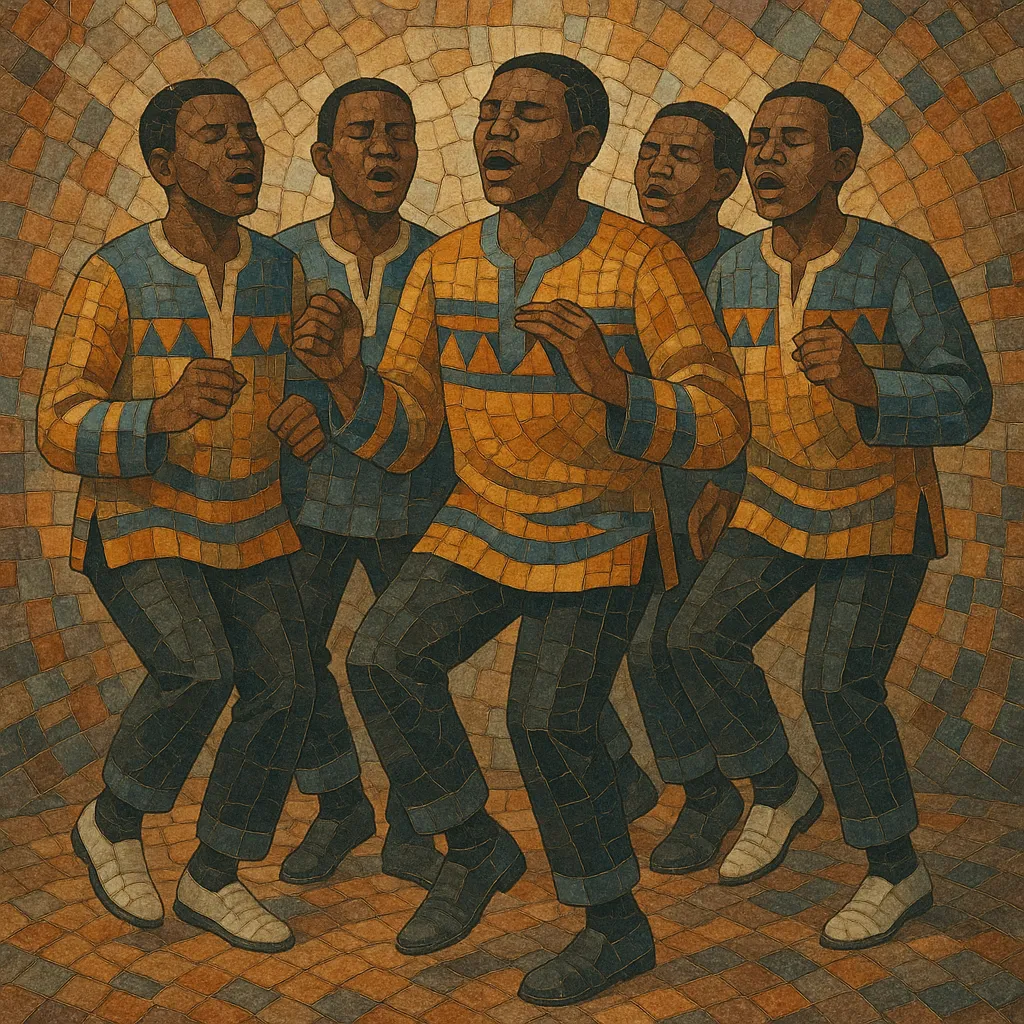
Isicathamiya is a South African Zulu a cappella choral style whose name roughly means "to walk softly" or "tiptoe," referring to its gentle, precise dance steps and soft dynamic. Performed traditionally by male ensembles, it blends Western hymn-based harmony with Zulu vocal aesthetics, featuring a prominent bass foundation, a flexible lead voice, and tightly coordinated call-and-response textures.
The style emphasizes blend, intonation, and choreography: singers move in synchronized, quiet footwork while shaping crescendos and decrescendos as a single body. Lyrics (often in Zulu, sometimes English) address themes of migrant labor life, longing for home, moral instruction, spirituality, and community pride. Ladysmith Black Mambazo’s global success became emblematic of the genre’s polished, serene sound.
Isicathamiya emerged among Zulu migrant workers in South Africa who, from the early to mid-20th century, organized weekend choral competitions in urban hostels. These singers absorbed Christian hymnody taught by missionaries and combined it with indigenous Zulu vocal practices and social dance. The earlier, louder urban Zulu choral style known as mbube (popularized by Solomon Linda in the 1930s) provided a key foundation.
By the 1950s–1960s, ensembles refined a quieter, more blended approach, emphasizing soft dynamics, smooth voice-leading, and intricate, tiptoe-like choreography—hence the name isicathamiya. The style privileged balance and precision over the declamatory, powerhouse projection of mbube. All-night competitions, adjudicated on blend, timing, uniformity, diction, and choreography, codified the style’s performance norms.
In the 1960s and 1970s, Joseph Shabalala’s Ladysmith Black Mambazo set new standards of blend, repertoire, and choreography, raising isicathamiya’s profile domestically. Their 1980s international collaborations—most famously on Paul Simon’s “Graceland” (1986)—brought the genre global recognition, showcasing its serene, luminous harmonies to world music audiences.
Isicathamiya remains a vibrant competitive tradition, sustained by community ensembles and youth groups across South Africa. While modern groups may incorporate new lyrical topics or staging, the core values—precise intonation, soft dynamic control, tight choreography, and poignant storytelling—continue to define the genre.

